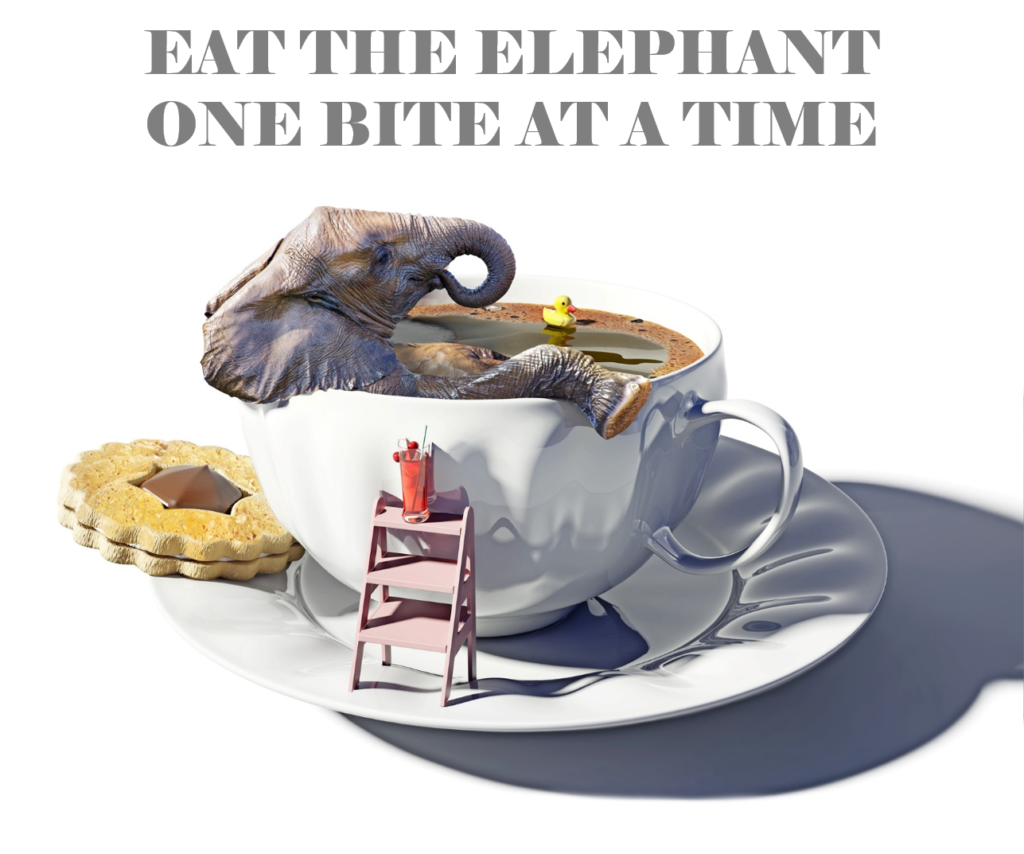 Scanning cable television commercials today will be a lot more tolerable, now that the midterm elections are behind us. (Of course, it’s now time to start talking about the 2020 Presidential race.)
Scanning cable television commercials today will be a lot more tolerable, now that the midterm elections are behind us. (Of course, it’s now time to start talking about the 2020 Presidential race.)
But while the vicious political ads are a thing of the past, we still have to sit through all those incessant weight loss commercials. Everyone is touting a diet of one kind or another – Nutrisystem with Marie Osmond (“Bye, bye, belly fat!”), Jenny Craig, Weight Watchers, the South Beach Diet, and of course, the new Ketogenic regimen.
For radio companies, however, the smartest and most nutritious program to follow is the “Elephant Diet.” Of course, you’ve never heard of this plan (because it doesn’t exist). But philosophically, it may be the most intelligent, realistic schematic a broadcast radio group can follow to stay healthy, vibrant, and profitable.

The essence of the diet can be summed up in one line:
Eat the elephant, one bite at a time.
It is easy to get caught up in multiple new initiatives, some of which inevitably turn out to be time sucks, money pits – or both. And that doesn’t suggest your plan is ill-conceived or wrong-headed. It just might mean there are too many things going on at the same time that conspire against success.
The problem is when broadcasters who are committed to change end up taking on too many projects. And that can exact a cost to their entire operation. While global companies like Amazon or Ford can chew gum and walk at the same time, most other executive teams are stretched as it is, from Elon Musk on the one hand to your average radio exec on the other.
One of the challenges is the balance between maintaining everyday performance levels (like making Q4), while also being charged with creation, reinvention, or both.
Innovation in new places isn’t an all-you-can-eat buffet line.
I was recently reminded of innovation’s precarious nature when a MediaPost story about Slate landed in my in-box. Slate is a site that’s all about politics and culture. And like many media brands, it’s faced with myriad challenges and competitors on both the content and distribution fronts.
Recently, their Chief Revenue Office, Charlie Kammerer, discussed how Slate is now on an innovation diet.
Eating the elephant one bite at a time.
Slate was looking at both podcast and video initiatives. But after assessing their situation, they came to the realization that video monetization can be complicated for a brand like theirs. So, they made the call to let video go (for now) on the grounds they are “too small” and that such a venture is simply “too expensive.” In an overheated environment, not many companies would be honest with themselves to reach those conclusions.
Rather than attempt a risky multi-task innovation strategy, they’re laser-focusing on their bread-and-butter – podcasts. Slate’s lineup of on-demand audio product netted them 150 million downloads – more than enough to scale their business. So, the plan is to focus on podcasts, and let some of these other bright, shiny objects go by the wayside.
Slate’s mission to create what Kammerer calls “premium scale.” That means getting big in the podcasting space, while still making good on the promise to create a great product that attracts a valued audience.
He calls it “focus scale” – a great way to describe providing quality to target consumers who are desirable and appreciative of what Slate is all about.
And playing off our post earlier this week about why more podcasters aren’t considering a subscription model, Slate has already been headed down that road. Kammerer and his team have come to the conclusion that podcasts often lead to subscriptions in their Slate Plus program, now four years old. By creating podcasts exclusively for this paying audience, Slate is growing this platform, while not getting deviated by other initiatives.
It is noteworthy that Slate’s digital sibling, Panoply, recently went on a similar initiative diet that would make Marie Osmond proud. They’re getting out of the podcast production business, and are now focusing on their bread and butter – hosting and ad services.

Both of these are acknowledgments that brands can’t do everything if they expect to live to fight another day. So, excelling at one key venture in this competitive, hyped environment makes all the sense in the world.
Eating the elephant, one bite at a time.
This is why we recommend that companies (and stations) focus their efforts on first researching these new opportunities and drawing up business models to prove out their suppositions. Oftentimes, broadcasters will do more research to find a “format hole” in one of their markets than do the due diligence necessary to prove out an exciting new digital initiative.
Our Techsurveys are designed to help radio accomplish just that. By plotting out what radio listeners are doing when they’re aren’t listening to radio, broadcasters can make smarter calls about when to play – and when to pass.
There’s a temptation to try do it all in the new media environment and see what catches on. But as smaller brands, in particular, are learning, trying to gobble up the digital elephant in one sitting isn’t just problematic, it’s a recipe for indigestion.
Register your station for Techsurvey 2019, launching in January. Information and registration here.
- What To Do If Your Radio Station Goes Through A Midlife Crisis - April 25, 2025
- A 2020 Lesson?It Could All Be Gone In A Flash - April 24, 2025
- How AI Can Give Radio Personalities More…PERSONALITY - April 23, 2025




Leave a Reply